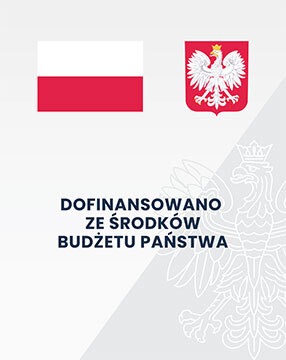Transakcyjna teoria czytania w organizacji informacji
Marek Nahotko
Afiliacja: Institute of Information and Library Science, Jagiellonian University, Polska
Abstrakt
CEL/TEZA: Celem artykułu jest przedstawienie niektórych możliwości zastosowania teorii gatunków tekstu, teorii transakcji oraz teorii schematów poznawczych w organizacji informacji. Gatunek tekstu traktować należy jako schemat mentalny powstający i rozpowszechniany w wyniku powtarzalnych transakcji z tekstem. Opis (rekord) bibliograficzny/katalogowy traktować można jak tekst określonego gatunku, co pozwala na badanie jego społecznych transakcji zarówno pomiędzy tekstem i autorem (organizatorem informacji, bibliotekarzem), jak również pomiędzy tekstem i odbiorcą (użytkownikiem systemu informacyjnego, biblioteki). Badania te mogą być przydatne m.in. dla opisu zmian transakcji związanych ze zmianami technologii informacyjnych.
METODY BADAŃ: W artykule przedstawiono zmiany w transakcjach organizacji informacji wynikających ze stosowania nowych technologii informacyjnych, a więc zamiany tekstów opisów bibliograficznych/katalogowych w cybertekst, a ich gatunków w cybergatunki. W artykule opis tych zmian przeprowadzono na podstawie głównie transakcji wyszukiwania według dwóch elementów tekstów opisów: nazw autorów i tytułów dzieł w różnych środowiskach technologicznych.
WYNIKI I WNIOSKI: Zmiany w technologiach stosowanych w organizacji informacji prowadzą do rozwoju i wzbogacania transakcji użytkownika z tekstem opisu w celu zwiększenia możliwości wyszukiwawczych i uproszczenia sposobów realizacji transakcji.
ORYGINALNOŚĆ/WARTOŚĆ POZNAWCZA: Podstawą przedstawionych koncepcji są teorie schematów poznawczych (konstruktywizm), gatunków tekstów (Miller oraz Andersen) oraz transakcji (Dewey, Rosenblatt) zastosowane do analizy opisów bibliograficznych (katalogowych), traktowanych jako teksty tworzone w określonej konwencji, powstającej jako efekt powtarzalnych transakcji między organizatorem informacji i jej użytkownikiem. Taki punkt widzenia pozwala na właściwe umiejscowienie tych tekstów wśród tekstów funkcjonujących w dyskursie naukowym.
Słowa kluczowe
Organizacja informacji; Teoria gatunków tekstu; Transakcyjna teoria czytania
Bibliografia
Allemang, D.; Hendler, J. (2008). Semantic Web for working ontologist: effective modeling in RDFS and OWL. Amsterdam: Morgan Kaufmann.
Andersen, J. (2015a). Re-describing knowledge organization – a genre and activity-based view. In: J. Andersen (ed.) Genre theory in information studies. Bingley: Emerald Group Publ., 13-42.
Andersen J. (2015b). What genre theory does. In: J. Andersen (ed.) Genre theory in information studies. Bingley: Emerald Group Publ., 1-12.
Auken, S. (2015). Utterance and function in genre studies: a literary perspective. In: J. Andersen (ed.). Genre theory in information studies. Bingley: Emerald Group Publ., 155-178.
Baker, T.; Coyle, K.; Petiya, S. (2014). Multi-entity models of resource description in the Semantic Web: a comparison of FRBR, RDA and BIBFRAME. Library Hi Tech, 32(4), 562-582.
Bakhtin, M. (1986). Estetyka twórczości słownej. Warszawa: Państw. Inst. Wydawniczy.
Bazerman, Ch. (2012). The orders of documents, the orders of activity and the orders of information. Archival Science, 12(4), 377-388.
Bazerman, Ch. (1994). Systems of genres and the enactment of social intentions. In: A. Freedman, P. Medway (eds.). Genre and the new rhetoric. London: Taylor & Francis, 79-101.
Bhatia, V. (1997). Genre analysis today. Revue belge de philologie et d’historie, 75(3), 629-652.
Breeding, M. (2015). The future of library resource discovery. Information Standards Quarterly, 27(1), 24-30.
Capurro, R.; Hjørland, B. (2003). The concept of information. ARIST, 37(1), 343-411.
Chanal, V. (2012). Building knowledge for innovation management. The experience of the Umanlab research team. VINE: The Journal of Information and Knowledge Management Systems, 42(3/4), 396-415.
Csikszentmihalyi, Michalyi; Rochberg-Halton, M. (1981). The mining of things. Boston: Cambridge Univ. Press.
Dehaene, S. (2009). Reading in the brain. The science and evolution of a human invention. New York: Penguin Viking.
Dervin, B. (1998). Sense-making theory and practice: an overview of user interests in knowledge seeking and use. Journal of Knowledge Management, 2(2), 36-46.
Devitt, A. (1993). Generalizing about genre: new conceptions of an old concept. College Composition and Communication, 44(4), 573-586.
Devitt, A. (1991). Intertextuality in tax accounting. Generic, referential, and functional. In: C. Bazerman, J. Paradis (eds.). Textual dynamics of the proffesions. Historical and contemporary studies of writing in professional communities. Madison: Univ. of Wisconsin Press, 336-380.
Dijk, T. van (2014). Discourse and knowledge. A sociocognitive approach. Cambridge: Cambridge University Press.
Dimec, Z.; Žumer, M.; Riesthuis, G. (2005). Slovenian cataloguing practice and Functional Requirements for Bibliographic Records: a comparative analysis. Cataloging & Classification Quarterly, 39(3/4), 207-227.
Elings, M.; Waibel, G. (2007). Metadata for all: descriptive standards and metadata sharing across libraries, archives and museums. First Monday [online], 12(3), [21.10.2015], http://firstmonday.org/issues/issue12_3/elings/index.html.
Feinberg, M. (2015). Genres without writers: information systems and distributed authorship. In J. Andersen (ed.). Genre theory in information studies. Bingley: Emerald Group Publ., 43-66.
Gajda, S. (2009). Gatunki wypowiedzi i genologia. In: Z. Bilut-Homplewiocz, W. Czachura, M. Smykała (eds.). Lingwistyka tekstu w Polsce i w Niemczech. Wrocław: Oficyna Wydaw, Atut.
Genette, G. (1997). Paratexts. Thresholds of interpretation. Cambridge: Cambridge Univ. Press.
Gnoli, C.; Ridi, R. (2014). Unified Theory of Information, hypertextuality and levels of reality. Journal of Documentation, 70(3), 443-460.
Godbold, N. (2006). Beyond information seeking: towards a general model of information behavior. Information Research [online], 11(4), [21.10.2015], http://www.informationr.net/ir/11-4/paper269.html.
Gradman, S. (2014). From containers to content to context. The changing role of libraries in eScience and eScholarship. Journal of Documentation, 70(2), 241-260.
Kock, N. (2009). Information systems theorizing based on evolutionary psychology: an interdisciplinary review and theory integration framework. MIS Quarterly, 33(2), 395-418.
Latham, K. (2014). Experiencing documents. Journal of Documentation, 70(4), 544-561.
Lenartowicz, M. ed. (1986). Przepisy katalogowania książek. Cz. 1. Opis bibliograficzny. Warszawa: Stow. Bibliotekarzy Polskich.
Martin, J. (2001). Language, register and genre. In: A. Burns, C. Coffin (eds.). Analysing English in a global context. London: Routledge, 149-166.
Miller, C. (1984). Genre as social action. Quarterly Journal of Speech 70(2), 151-167.
Moulaison, H.; Dykas, F.; Budd, J. (2014). Foucault, the author and intellectual debt: capturing the author-function through attributes, relationships and events in Knowledge Organization Systems. Knowledge Organization, 41(1), 30-43.
Orlikowski, W.; Yates, J. (1994). Genre repertoire: the structuring of communicative practices in organizations. Administrative Science Quarterly, 39(4), 541-574.
Pearson, D. (2009). The roots of reading comprehension instruction. In: S. Israel, G. Duffy (eds.) Handbook of research on reading comprehension. New York: Routledge, 3-31.
Rosenblatt, L. (1994). The transactional theory of reading and writing. In: R. Rudell, M. Rudell, H. Singer (eds.) Theoretical models and processes of reading. Newark: Intern. Reading Assoc., 1057-1092.
Rosenblatt, L. (1993). The transactional theory: against dualisms. College English, 55(4), 377-386.
Rosenblatt, L. (1988). Writing and reading: the transactional theory. Technical Report no. 416. Champaign: Univ. of Illinois at Urbana-Champaign.
Rosenblatt, L. (1978). The reader, the text, the poem: the transactional theory of literacy work. Carbondale: Southern Illinois University Press.
Roszkowski, M. (2015). Kartoteki nazw osobowych w środowisku sieciowym. Biuletyn EBIB [online], 7(160), [7.12.2015], http://open.ebib.pl/ojs/index.php/ebib/article/view/380/551.
Smagorinsky, P. (2001). If meaning is constructed, what is it made from? Toward a cultural theory of reading. Review of Educational Research, 71(1), 133-169.
Smiraglia, R. (2002). The progress of theory in knowledge organization. Library Trends, 50(3), 330-349.
Sosińska-Kalata, B. (1999). Modele organinzacji wiedzy w systemach wyszukiwania informacji o dokumentach. Warszawa: Wydaw. SBP.
Thellefsen, M.; Thellefsen, T.; Sørensen, B. (2015). The fallacy of the cognitive free fall in communication metaphor: a semiotic analysis. Library Trends, 63(3), 512-527.
Tomasello, M. (2015). Historia naturalna ludzkiego myślenia. Warszawa: Copernicus Center Press.
Tracey, D.; Morrow, L. (2012). Lenses on reading. An introduction to theories and models. 2nd ed. New York, London: The Guilford Press.
Tredinnick, L. (2007). Post-structuralism, hypertext, and the World Wide Web. Aslib Proc., 59(2), 169-186.
Vellucci, S. (1998). Bibliographic relationships. In: J. Weihs (ed.) The principles and future of AACR. Proc. of the Internat. Conference on the Principles and Future Development of AACR. Toronto, October, 23-25, 1997. Ottawa: Canadian Library Assoc., 105-146.
Vaughan, M.; Dillon, A. (1998). The role of genre in shaping our understanding of digital documents. In: Proc. of 61st Annual Meeting of the ASIS. Medford: Information Today Inc., 559-566.
Wierzbicka, A. (1983). Genry mowy. In: T. Dobrzyńska, E. Janus (eds.) Tekst i zdanie: zbiór studiów. Wrocław: Zakład Narodowy im. Ossolińskich, p. 125-137.
Wilson, E. (2011). Konsiliencja. Jedność wiedzy. Poznań: Zysk i S-ka.
Wilson, T. (1999). Models in information behavior research. Journal of Documentation, 55(3), 249-270.
Wojciechowski, J. (2014). Biblioteki w nowym otoczeniu. Warszawa: Wydaw. SBP.
Zhang, P.; Soergel, D. (2014). Towards a comprehensive model of the cognitive process and mechanisms of individual sensemaking. Journal of the ASIST, 65(9), 1733-1756.
Afiliacja: Institute of Information and Library Science, Jagiellonian University, Polska
Biogram:
Dr hab. MAREK NAHOTKO is Associate Professor at the Institute of Information and Library Science at Jagiellonian University, specializing in the issues of metadata for electronic documents and the use of the Internet in scientific communication and information services. He published books: Komunikacja naukowa w środowisku cyfrowym [Scientific communication in digital environment] (Warsaw, 2010), Naukowe czasopisma elektroniczne [Electronic research journals] (Warsaw, 2007), Opis dokumentów elektronicznych. Teoretyczny model i możliwości jego aplikacji [Description of electronic documents. The theoretical model and the possibilities of its application] (Cracow, 2006), Metadane : sposób na uporządkowanie Internetu [Metadata: how to organize the Internet] (Cracow, 2004) and numerous articles, among others in journals Przegląd Biblioteczny [Library Review], Zagadnienia Informacji Naukowej [Issues in Information Science] and Biuletyn EBIB [EBIB Bulletin].
Contact to the Author:
marek.nahotko@uj.edu.pl
Institute of Information and Library Science
ul. prof. Stanisława Łojasiewicza 4
30–348 Kraków, Poland
CC BY-NC-ND 4.0 Uznanie autorstwa - Użycie niekomercyjne - Bez utworów zależnych 4.0 Międzynarodowe





